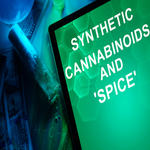Amphetamine salts, such as Ritalin ® or Adderall ®, are prescribed by physicians to treat attention deficit hyperactivity disorder (ADHD). While prescription stimulants can be an effective ADHD treatment, the drugs are commonly diverted and used by people who want an edge for studying. Others will use the drugs to get high or for extra energy for partying longer. Stimulants are highly addictive, and abuse can lead to a number of serious health problems. What’s worse, the majority of stimulant users are unaware of the risk amphetamines pose.
The non-medical use of drugs like Adderall is especially common among young adults, typically those enrolled college. Small doses of amphetamines can increase people’s focus, helping them study for prolonged periods of time. In heavy amounts, the drugs can lead to life threatening side effects, including nausea, vomiting and seizures. In fact, new research shows that while prescriptions for stimulants have remained fairly level in recent years, non-medical use of Adderall by young adults has risen by 67 percent and associated emergency room visits rose by 156 percent, UPI reports. The study was conducted by researchers at Johns Hopkins University and was published in the Journal of Clinical Psychiatry.
Unfortunately, many young adults do not view the use of stimulants as being dangerous. What’s more, amphetamine narcotics are most commonly acquired from one’s friends and family. The researchers point out that misconceptions about the use of Adderall can be deadly, resulting in high blood pressure and even a stroke.
“[The study] suggests that the main driver of misuse and emergency room visits related to the drug is the result of diversion — people taking medication that is legitimately prescribed to someone else,” said former Johns Hopkins student Dr. Lian-Yu Chen, now a researcher at National Taiwan University Hospital. “Physicians need to be much more aware of what is happening and take steps to prevent it from continuing.”
If you are struggling with non-medical amphetamine use, it is vital you seek help immediately, please contact Harmony Foundation. Breaking the cycle of addiction is a difficult process. We offer the most effective treatment environment for young adults, we can help you begin the healing process and the journey into recovery.







